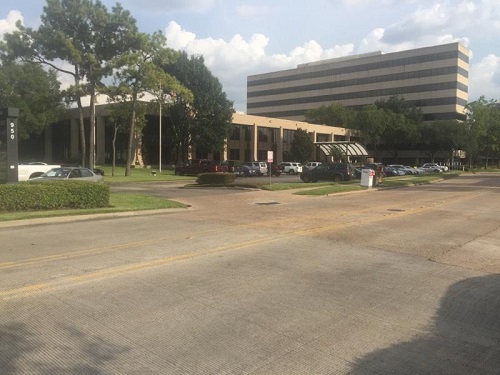A surgical method used to eliminate a part of the small or large intestine is known as bowel resection. The diseased part of the intestine is taken out during the procedure and two healthy parts of the intestine are joined with each other. The resection of the small intestine is a frequently executed method in general surgery. The length of the small intestine allows resection without significantly compromising the function of the gastrointestinal system in the majority of situations (1). The large bowel resection involves eliminating a part or the whole colon. This depends on the underlying reason behind the development of the disease that raises the need for removal (2,3).
INDICATIONS
Small bowel resection is frequently indicated for obstruction of the small bowel due to deformities or scar tissues, inflammation due to Crohn’s disease, regional enteritis, or regional ileitis, inflammatory bowel disease (IBD), ischemic necrosis, traumatic and non-traumatic perforations, malignancies, enterocutaneous fistula, necrotizing enterocolitis along with perforation, infection, bleeding, or severe small bowel ulcers, precancerous polyps, and diverticular disease or Meckel diverticulum (4–6).
Large bowel resection is frequently indicated for the management of primary colorectal cancer and precancerous condition that involves familial adenomatous polyposis. It is also indicated in IBDs such as Crohn’s disease, ulcerative colitis, and diverticulitis. All these conditions have become resistant to medical interventions or become life-threatening because of the complications these conditions present with such as perforations, bleeding, or sepsis. Other conditions that may necessitate the removal of the colon may include perforation of the walls of the colon, intestinal obstructions, toxic megacolon, ischemic colon, presence of fistulas between other organs and colon, and volvulus (7).
PROCEDURE STEPS
Both small and large bowel resection is performed through open and laparoscopic techniques, however, the surgical principles are the same for both techniques. In the open surgery method, the surgeon makes an incision on the abdomen and removes the diseased part of the intestine, and joins the healthy parts with each other. An opening or more commonly called a stoma is made on the abdomen if healthy ends of the intestine are not joined to allow the removal of stool into a bag. The incision made at the surgical site is stitched together and a bandage is placed over it.
While in the laparoscopic technique, the surgeon makes small incisions on the abdomen. Through one of these cuts, the surgeon passes a tube that inflates the stomach with carbon dioxide gas. This helps the surgeon to clearly view the site of surgery. A camera attached at the end of the tube is then passed through the cut that allows the surgeon to view the inside of the abdomen. Other cuts are used to pass the instruments and tools that help in the removal of the diseased portion of the intestine. In case some healthy intestine is left behind, the healthy parts will be linked with each other. If this is not the case, then a stoma will be made on the abdomen allowing the removal of stool into a bag. Stitches are used to close the surgical incision and a bandage is placed over it (8,9).
COMPLICATIONS
Wound infections at the surface are common for small bowel resection, especially in contaminated cases (10). The frequently feared complication after small bowel resection is leak or breakdown of anastomosis. A frequent subacute complication arising after the breakdown of anastomosis after small bowel resection is the formation of a fistula. A common outcome of anastomotic leak is both enterocutaneous fistulas. It is also a frequently occurring reason for further small bowel resection if the fistula persists. Similar to any other intra-abdominal surgery, small bowel resection can also add to the risk of adhesion increasing the future chances of obstruction (11).
In small bowel resection, the intestinal transit is quick because the time required for emulsification of vitamins is reduced and it results in a deficiency of fat-soluble vitamins (12). In large bowel resection, procedural complications comprise bleeding, frequently venous. Another complication arising during the procedure is damage to the nearby viscera. The structure prone to damage during the procedure is the left ureter. Moreover, complications after surgery include wound infections, urinary tract infections, or chest infections (9).
References
- Guillen B, Atherton NS. Short Bowel Syndrome. In: StatPearls [Internet]. Treasure Island (FL): StatPearls Publishing; 2022 [cited 2022 Aug 9]. Available from: http://www.ncbi.nlm.nih.gov/books/NBK536935/
- Cleary RK, Morris AM, Chang GJ, Halverson AL. Controversies in Surgical Oncology: Does the Minimally Invasive Approach for Rectal Cancer Provide Equivalent Oncologic Outcomes Compared with the Open Approach? Ann Surg Oncol. 2018 Nov;25(12):3587–95.
- Hiroishi A, Yamada T, Morimoto T, Horikoshi K, Nakajima Y. Three-dimensional computed tomographic angiography with computed tomographic colonography for laparoscopic colorectal surgery. Jpn J Radiol. 2018 Dec;36(12):698–705.
- Nikeghbalian S, Aliakbarian M, Kazemi K, Shamsaeefar AR, Mehdi SH, Bahreini A, et al. Ex-vivo Resection and Small-Bowel Auto-transplantation for the Treatment of Tumors at the Root of the Mesentery. Int J Organ Transplant Med. 2014;5(3):120–4.
- Rieder F, Bettenworth D, Ma C, Parker CE, Williamson LA, Nelson SA, et al. An expert consensus to standardise definitions, diagnosis and treatment targets for anti-fibrotic stricture therapies in Crohn’s disease. Aliment Pharmacol Ther. 2018 Aug;48(3):347–57.
- Johnson KN, Chapital AB, Harold KL, Merritt MV, Johnson DJ. Laparoscopic management of acute small bowel obstruction: evaluating the need for resection. J Trauma Acute Care Surg. 2012 Jan;72(1):25–30; discussion 30-31; quiz 317.
- Ramsanahie A, Bleday R. Colectomy. In: Johnson LR, editor. Encyclopedia of Gastroenterology [Internet]. New York: Elsevier; 2004 [cited 2022 Aug 9]. p. 366–71. Available from: https://www.sciencedirect.com/science/article/pii/B0123868602001404
- Clatterbuck B, Moore L. Small Bowel Resection. In: StatPearls [Internet]. Treasure Island (FL): StatPearls Publishing; 2022 [cited 2022 Aug 9]. Available from: http://www.ncbi.nlm.nih.gov/books/NBK507896/
- Lieske B, Ahmad H. Colon Resection. In: StatPearls [Internet]. Treasure Island (FL): StatPearls Publishing; 2022 [cited 2022 Aug 9]. Available from: http://www.ncbi.nlm.nih.gov/books/NBK431079/
- Cumberledge JD, Anaka I, Kupec JT. Rare case of small intestine bleeding. BMJ Case Rep. 2019 Jan 29;12(1):e227184.
- Wessels LE, Calvo RY, Dunne CE, Bowie JM, Butler WJ, Bansal V, et al. Outcomes in adhesive small bowel obstruction from a large statewide database: What to expect after nonoperative management. J Trauma Acute Care Surg. 2019 Apr;86(4):651–7.
- Fieldhouse H, Nestel A, Theron B, Knox Cartwright N. Corneal perforation due to vitamin A deficiency in a patient with short bowel syndrome. BMJ Case Rep. 2021 Sep 12;14(9):e242776


